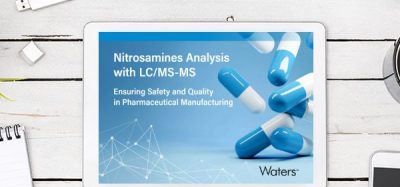Linagliptin receives approval in Europe for treatment of type 2 diabetes
Posted: 25 August 2011 | | No comments yet
Linagliptin is the only DPP-4 inhibitor to be approved at one dosage strength for adults with type 2 diabetes in Europe, without any need for dose adjustments…


Boehringer Ingelheim and Eli Lilly and Company (NYSE: LLY) today received Marketing Authorization from the European Commission for linagliptin 5 mg film-coated tablets (to be marketed under the trade name Trajenta® inEurope) for the treatment of adults with type 2 diabetes. The European Commission has approved linagliptin in combination with metformin and metformin plus sulfonylurea.(1) Linagliptin is also approved for use as monotherapy in patients inadequately controlled by diet and exercise alone and for whom metformin is inappropriate due to intolerance, or contraindicated due to renal impairment.(1)
In the U.S., linagliptin 5 mg is marketed under the trade name Tradjenta™ (linagliptin) tablets and was approved by the U.S. Food and Drug Administration (FDA) in May 2011 to be used along with diet and exercise to lower blood sugar in adults with type 2 diabetes. Linagliptin should not be used in patients with type 1 diabetes or for the treatment of diabetic ketoacidosis (increased ketones in the blood or urine). It has not been studied in combination with insulin. Linagliptin is also approved for use in other countries, including Japan (trade name Trazenta).
“The Phase III clinical trial program has demonstrated efficacy with linagliptin in the treatment of adults with type 2 diabetes,” said Prof. Klaus Dugi, corporate senior vice president medicine, Boehringer Ingelheim. “We are delighted that linagliptin will soon be available to patients across Europe.”
Studies show linagliptin has a demonstrated efficacy and safety profile, reducing hemoglobin A1C (HbA1C or A1C) levels by a mean of -0.6 to -0.7 percent(2,3) (compared to placebo). A1C is measured in people with diabetes to provide an index of blood glucose control for the previous two to three months and is used as a marker to determine the efficacy of glucose-lowering therapies.
“Linagliptin is primarily excreted unmetabolized via bile and gut, meaning no dose adjustment is needed in adult patients with kidney or liver impairment,” said Prof. Anthony Barnett, professor of medicine and clinical director of the Department of Diabetes and Endocrinology, Heart of England NHS Foundation Trust, Birmingham, UK. “This means that linagliptin is available at only one dose.”
The approval of linagliptin in Europe was based on a clinical trial program which involved approximately 6,000 adults with type 2 diabetes. Included in the program were placebo-controlled studies evaluating linagliptin as monotherapy(4) and in combination with the commonly prescribed oral antihyperglycemic medications metformin and/or sulfonylurea.(2,5-6) In two monotherapy studies, linagliptin showed a statistically significant mean difference in A1C from placebo of -0.6 to -0.7 percent.(3-4) In patients who were not adequately controlled on metformin or metformin plus sulfonylurea, the addition of linagliptin also resulted in a statistically significant mean difference in A1C from placebo of -0.6 percent.(2,5) The incidence of hypoglycemia was similar to placebo and weight did not change significantly from baseline.(2,5)
In the pooled analysis of the placebo-controlled trials, the overall incidence of adverse events in patients treated with placebo was similar to that seen with linagliptin (53.8 percent versus 55.0 percent).
The most frequently reported adverse reaction was hypoglycemia observed with the triple combination of linagliptin plus metformin plus sulfonylurea.
“The EU approval of linagliptin marks another major regulatory milestone for the Boehringer Ingelheim and Lilly alliance in diabetes,” said Enrique Conterno, president of Lilly Diabetes. “Linagliptin can be an important treatment option for adults living with type 2 diabetes.”
References
- Trajenta™ (linagliptin) tablets. EMA Summary of Product Characteristics. 2011.
- Taskinen MR, Rosenstock J, Tamminen I, et al: Safety and efficacy of linagliptin as add-on therapy to metformin in patients with type 2 diabetes: a randomized, double-blind, placebo-controlled study. Diabetes Obes Metab 2011;13:65-74.
- Del Prato S, Barnett AH, Huisman H, et al: Effect of linagliptin monotherapy on glycaemic control and markers of B-cell function in patients with inadequately controlled type 2 diabetes: a randomised controlled trial. Diabetes Obes Metab 2011;13:193-287.
- Barnett AH, Harper R, Toorawa R, et al: Linagliptin monotherapy improves glycaemic control in type 2 diabetes patients for whom metformin therapy is inappropriate, 46th Annual Meeting of the European Association for the Study of Diabetes. Stockholm, Sweden, 2010, pp Poster 823.
- Owens DR, Swallow R, Woerle HJ, et al: Linagliptin improves glycemic control in type 2 diabetes patients inadequately controlled by metformin and sulfonylurea without weight gain and low risk of hypoglycemia, 70th American Diabetes Association Scientific Sessions. Orlando, Florida, U.S.A., 2010, pp Poster 548-P.
- Lewin AJ, Arvay L, Liu D, et al: Safety and efficacy of linagliptin as add-on therapy to a sulphonylurea in inadequately controlled type 2 diabetes, 46th Annual Meeting of the European Association for the Study of Diabetes. Stockholm, Sweden, 2010, pp Poster 821-P.
- Centers for Disease Control and Prevention. National Diabetes Fact Sheet 2011. Available at http://www.cdc.gov/diabetes/pubs/pdf/ndfs_2011.pdf. Accessed on: August 16, 2011.
- World Health Organization. Fact Sheet No. 312: What is Diabetes? Available at: http://www.who.int/mediacentre/factsheets/fs312/en/. Accessed on: August 16, 2011.
- International Diabetes Federation. Diabetes Atlas. 3rd edn. Brussels: International Diabetes Federation, 2006.








